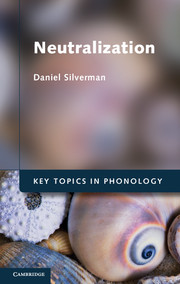18 - Transitional probabilities
Published online by Cambridge University Press: 05 November 2012
Summary
Kruszewski's, Trubetzkoy's, and Firth's theorizing on the functional value of neutralization – that is, its role in serving as an aid to parsing – has, in recent years, been operationalized by a number of researchers investigating transitional probabilities. The work of Saffran and associates is our focus herein. Saffran investigates the utility of transitional probabilities in both adult and infant learning of contrived mini-languages, finding that, indeed, the statistically rare sound sequences found at “word” boundaries (of course, in these experiments they are not real words) serve to cue these boundaries. The necessary flipside to this finding is that statistically more prevalent sound sequences – those involving neutralization within some domain – may function as negative boundary signals.
Before beginning, it should be noted that, in much of the experimental work of Saffran, the functional role of low transitional probabilities in terms of signaling boundaries is a purely statistical calculation over physical objects (speech tokens); there is no role for lexical semantic feedback. As such, the determination of transitional probabilities in these experimental contexts actually serves to factor out the concomitant semantic feedback that is necessarily present in real-world language learning contexts. The information extracted in such studies is purely distributional (harking back in some sense to American structuralist notions of phonological structure and juncture, and perhaps in particular, so-called “monosystemicity”). In real-world contexts, of course, the raw role of transitional probabilities is difficult to accurately gauge, since any statistical calculations engaged in by language learners is necessarily accompanied by lexical semantic feedback, to which language learners become more attuned with experience and maturation (Firth's “level-mixing” properly acknowledges this role for lexical semantic feedback).
- Type
- Chapter
- Information
- Neutralization , pp. 188 - 193Publisher: Cambridge University PressPrint publication year: 2012



